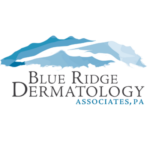Many people have spider veins. For those who have these twisted veins on their legs (or anywhere else on their body), they can be a cosmetic annoyance. Some people even have unpleasant symptoms associated with these veins. The good news is that an experienced board-certified dermatologist can treat spider veins with a quick and minimally-invasive procedure.
What Are Spider Veins?
Spider veins are damaged blood vessels near the surface of the skin. They most often occur in the legs. Veins have special one-way valves on the inside. These tiny valves keep blood flowing in one direction that goes back to the heart. When the valves get weak, blood can flow backward and collect in the vein. This puts pressure on the walls of the vein, which can eventually cause the vein to weaken and bulge. That bulge is what we see as a spider vein.
Many people consider these veins to be unsightly, but they can also cause uncomfortable symptoms like throbbing, cramping, swelling, and itching in the leg. According to the American Academy of Dermatology (AAD), in serious cases, this type of vein can put you at risk for complications like blood clots or open sores on your leg.
According to the US Office on Women’s Health, spider veins may affect more than half of American women. These veins affect almost twice as many women as men and are more common in older women. While these veins are common in all groups of people, according to AAD, some people have a higher risk of developing spider veins:
- People who have blood relatives with spider veins
- People who stand or sit for long periods most days
- Pregnant women
- Older women
Treating Spider Veins
Dermatologists can treat spider veins with a procedure called sclerotherapy. This treatment is non-surgical and does not require much recovery time. In most cases, you can have the procedure done in the office and then go about your normal activities soon afterward.
During sclerotherapy, the dermatologist injects a special solution into the vein. The solution closes the vein so that blood can no longer flow through the vein. The blood is rerouted through healthier veins, which improves circulation. Over the next few weeks, the veins will collapse and disappear.
After the treatment, you will be monitored for a while, and then you’ll be allowed to go home. You can usually return to work and other normal activities the next day. Your doctor will give you compression stockings and instructions on how long you should wear them after your sclerotherapy treatment.
Prevention
There are some steps you can take to reduce your chances of developing more spider veins after treatment. These steps may also help with symptoms related to problem veins before treatment.
- Keep your legs moving and improve circulation by walking or running.
- Avoid sitting or standing for long periods of time. Take a break for a quick walk every 30 minutes or so, if possible.
- Avoid crossing your legs when seated.
- If you are on your feet a lot, get some light compression stockings or socks. Check with your doctor before wearing compression garments. They can make sure you get a compression garment with the right size and pressure.
- Elevate your legs higher than your heart for a while at the end of the day.
To get more information on how you can get rid of your spider veins, consult a dermatologist. If you are looking for a dermatologist, Blue Ridge Dermatology provides comprehensive medical and cosmetic dermatology care for patients in the Cary, NC, area. To get more information about spider vein treatments, call us at (919) 781-1050 to make an appointment.


